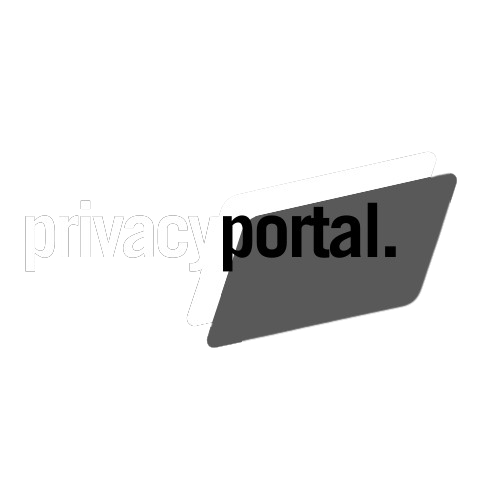In an age where digital footprints leave behind traces that can be monitored, the significance of privacy has surged. The rise of IoT (Internet of Things) devices has both benefited and complicated the notion of digital privacy. Understanding how privacy phones, with their unique features—such as those seen in the Google Pixel 4 XL privacy features—interact with IoT devices can help safeguard our online presence while maximizing connectivity. This article will delve into the challenges and solutions at the crossroads of privacy and technology.
The Necessity of Privacy in Our Digital World
As our lives become increasingly entwined with technology, the need for enhanced privacy has never been more critical. Every click, every transaction, and every interaction online can potentially be captured and exploited. For businesses and individuals alike, understanding privacy is paramount in protecting sensitive information. This is where privacy phones come into play.
What Makes a Phone 'Privacy-Friendly'?
Privacy phones are designed specifically to safeguard user information. Unlike standard smartphones, they feature built-in security functionalities, enhanced operating systems, and stringent data management protocols. The Google Pixel 4 XL privacy features, for instance, include options like facial recognition, automatic security updates, and a dedicated security chip that brings an added layer of protection. Such specifications empower users to control their data and maintain privacy.
The Role of IoT Devices in Privacy
IoT devices are fundamentally reshaping the way we interact with our surroundings—be it smart speakers, connected thermostats, or wearables. While IoT devices enhance convenience and efficiency, they can also become potential leaks for personal data. The very nature of IoT—as a network of interconnected devices—means that each device adds to the complexity of our privacy landscape.
How IoT Devices Complicate Privacy
- Data Collection: Most IoT devices continuously collect data to optimize performance, often without user knowledge. This data can include everything from location tracking to buying habits, raising multiple privacy concerns.
- Interconnectedness: As devices communicate with each other, a breach in one system can potentially lead to vulnerabilities in another, magnifying the privacy risks.
- Lack of Regulation: The IoT space is often under-regulated. With minimal laws governing how data is used or stored, users can find themselves in murky waters.
Navigating the Privacy Challenge
With an array of challenges posed by IoT devices, the question becomes: how can we protect our privacy? The answer lies in an integrated approach that involves using privacy phones, knowing about data security practices, and being critical of the devices we allow into our lives.
Leveraging Privacy Phones
Using phones with advanced privacy features can significantly help in navigating the dangers of IoT. When paired with smart devices, a privacy phone can act as a control hub. This includes the ability to manage permissions effectively and monitor what data is being shared. The Google Pixel 4 XL privacy features serve to shield data from being accessed by unwanted programs or unauthorized users.
Best Practices for IoT Device Security
- Change Default Settings: Always customize your IoT device settings. Default settings are often not secure and can leave your devices vulnerable.
- Regular Updates: Keep your IoT devices updated to benefit from the latest security patches and features.
- Opt for Encryption: When possible, enable encryption on IoT devices to safeguard the data being transmitted.
- Limit Connectivity: Only connect devices to the internet when necessary. Disable features like remote access unless actively in use.
The Future of Privacy in IoT
The convergence of privacy phones and IoT is still unfolding, but there is much to anticipate. As businesses develop more robust privacy solutions and regulations catch up with technological advancements, users can look forward to a safer digital environment.
Trends to Watch
- Increased Demand for Privacy Features: Users are becoming more aware of their digital rights, driving demand for phones with enhanced privacy functionalities.
- Advancements in AI Security: Businesses will increasingly utilize artificial intelligence to analyze threats and improve security measures for IoT devices.
- Collaborations for Compliance: Companies will likely collaborate with regulators to create comprehensive standards for data privacy in IoT environments.
Real-World Applications of Privacy Phones with IoT Devices
Several real-world scenarios highlight the efficacy of privacy phones when used alongside IoT devices. Understanding these applications can provide insight into how to protect personal data while remaining connected.
Smart Home Integration
Imagine a smart home equipped with various IoT devices—from smart lights to a connected security system. A privacy phone can act as the control center, ensuring that communications remain secure. Users can regulate which devices communicate with each other, thus minimizing data leaks. Privacy phones with features like those found in the Google Pixel 4 XL allow for easy management and oversight of connected devices.
Health and Wearable Devices
Wearable technologies—like fitness trackers or health monitoring devices—are designed to collect and analyze personal health data. These devices can pose severe privacy risks if they are hacked or improperly managed. Using a privacy phone to sync with these wearables enables users to control what data is shared and stored. They can fully utilize the potential of their wearables without compromising their privacy.
Business Applications
Businesses are not exempt from the challenges brought on by IoT devices. Organizations that rely on connected devices must implement stringent privacy practices. Privacy phones can facilitate secure communication within teams, protecting sensitive business information from data breaches. More businesses are now recognizing the importance of safeguarding their digital assets, leading to the demand for privacy features in both personal and professional tools.
Evolving Consumer Expectations
Consumers are increasingly holding companies accountable for their privacy practices. This shift is forcing businesses to prioritize transparency and security in the development of IoT devices. Companies not only need to offer products but also ensure that these products have effective privacy measures embedded within them.
Privacy-Centric Business Models
- Adaptive Pricing Models: Companies may offer subscription services for security features, helping users safeguard their data.
- Transparency Metrics: Providing users with insights on data collection and storage can build trust and encourage adoption.
- Collaboration with Privacy Advocacy Groups: Brands that work with advocates can develop standards that resonate with privacy-conscious consumers.
Empowerment Through Knowledge
As consumers and businesses navigate the delicate balance of connectivity and privacy, the most effective tool remains education. Understanding privacy features and actively monitoring how we interact with IoT devices empowers us to make safer digital choices.
Staying Informed on Privacy Developments
Staying updated on the latest news and trends in privacy technology allows users to adapt promptly to changing environments. Following reputable tech blogs, participating in discussions, and engaging with privacy advocates can provide valuable insights into maintaining security in a bustling digital landscape.
Privacy as a Priority
The integration of privacy phones and IoT technology is not merely a passing trend; it’s a critical shift in how we understand and manage our digital identities. With the exponential growth of connected devices, the responsibility is on each of us to demand better privacy practices and leverage the tools available—such as privacy phones—to secure our data. Embracing this change today will set the foundation for a future where privacy isn’t just an afterthought but a core component of our technological landscape.







